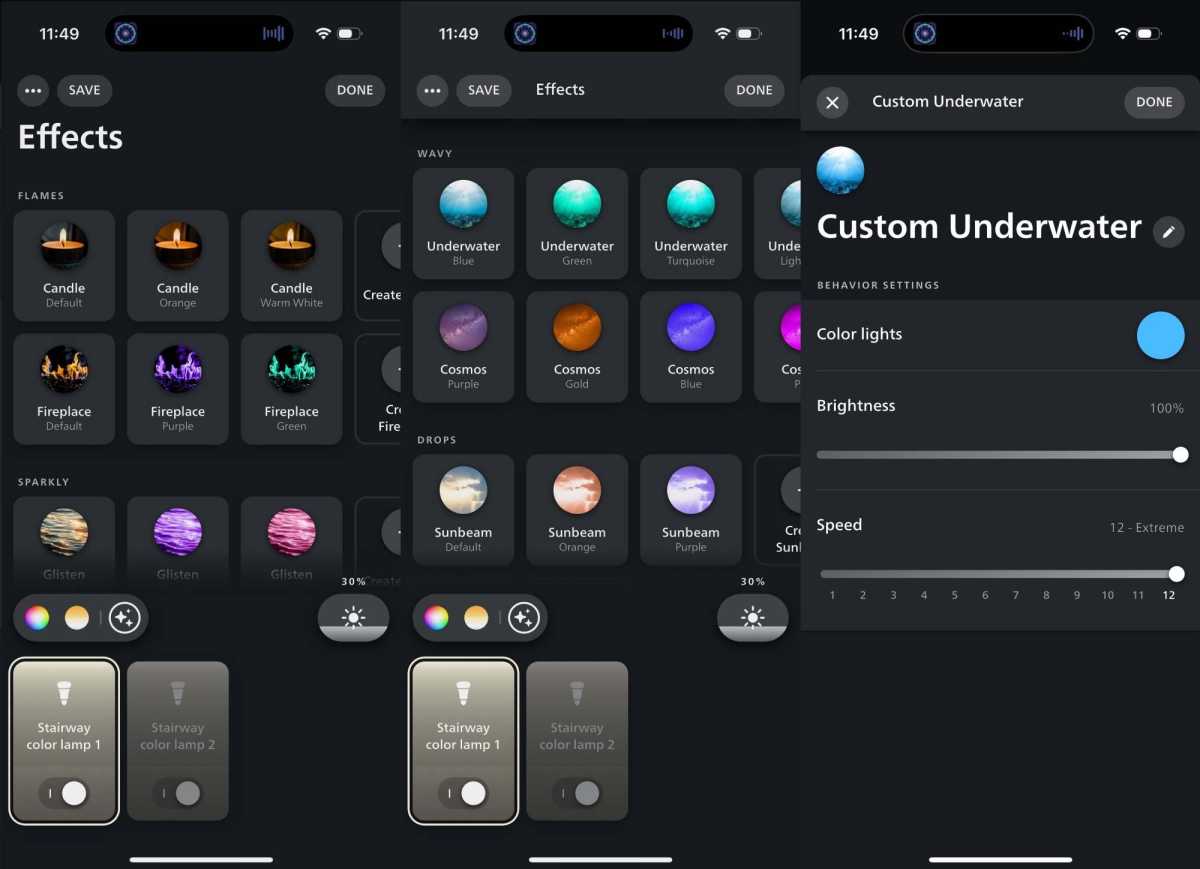The Philips Hue app has evolved significantly over the years, incorporating a variety of new features and settings into its user interface. As a result, it’s easy to overlook some of the latest additions and functionalities that Hue has to offer.
Among these recent enhancements are features like light alarms and the “Mimic Presence” mode, alongside beloved classics such as timers and fade durations. Collectively, these often-overlooked capabilities can enhance your Hue experience, help you maintain your daily routine, and even secure your home against potential intruders.
Let’s delve into six lesser-known Philips Hue features that you should definitely explore, starting with…
Mimic Presence Mode
Philips Hue has ventured into home security by introducing a range of Hue Secure cameras, door and window sensors, and floodlights. However, even if you don’t own a Hue camera, you can still enhance your security with the built-in Mimic Presence feature.
When activated, this mode causes your lights to turn on and off in a way that replicates the activities typically seen in a household, making it an effective deterrent against burglars who may consider entering your vacant home.
You can find the Mimic Presence feature under the Automations menu. Simply select it, choose one or more rooms, and designate which lights to control. You can also set it to operate continuously or only during nighttime hours.
To engage the Mimic Presence mode, go to the Automations tab, tap the “Play” button, or hit “Stop” to deactivate it. Additionally, you can program a Hue button to toggle Mimic Presence on and off or link it to a Hue smartphone widget.
Light Alarms
This is another Hue feature designed to keep your home secure. Instead of traditional audible alarms, the Hue app allows you to activate a light-based alarm that rapidly flashes one or more of your Hue lights, effectively alerting neighbors to potential trouble and scaring off intruders.
To utilize light alarms, you’ll need compatible devices such as a Hue Secure camera or either an indoor or outdoor Hue motion sensor. You must also enable the Hue Security center via Settings > Security.
During your security setup, the Hue app will guide you through light alarm configuration, allowing you to specify which lights will flash when the alarm goes off and choose between white or red flashing colors.
Set your Philips Hue light alarms to flash white or red for enhanced security.
Ben Patterson/Foundry
In addition to the flashing light alarms, you can establish automations that activate specific light scenes whenever a Hue sensor detects motion. For instance, I’ve programmed my app so that a bright light scene illuminates my home office when the kitchen door is opened, conveniently alerting me when my child returns from school.
To set up this automation, I navigated to the settings for my door and window sensors (Settings > Devices > Sensors > Contact Sensors), selected the lights I wanted to trigger (Office), and adjusted the Behavior settings for when the door was opened and closed.
Fade Duration
The Hue app allows users to create both wake-up and sleep routines that gradually increase or decrease brightness, but you also have the option to set any light scene to transition smoothly.
I find the “fade duration” feature particularly useful for shifting daytime lighting from a warm morning glow to a cooler afternoon brightness, ensuring it doesn’t catch anyone off guard. (The Hue app includes a “Natural Light” scene that adjusts light temperature throughout the day, with an optional transition period, but I prefer customizing my settings.)
When establishing a custom automation (tap the Automations tab and then the blue “+” icon in the upper-right corner), the Fade Duration option appears during the initial setup. You can choose a fade time between five minutes and one hour.
If you’re modifying an existing scene, tap “Start at” or “End at” to access the Fade Duration setting.
Light Effects
Hue lights offer more than just basic color or white illumination; they can also create flicker, shimmer, and pulse effects in various shades—perfect for mimicking the ambiance of candles, fireplaces, or lava lamps.
Select a Hue light in a room and tap the Effects button (the one with a sparkling icon) adjacent to the color controls. Depending on your selected light type, you’ll find a range of effects: Dimmable-only Hue white lights provide a Candle effect, while tunable White Ambience lights include Glisten and Sparkle effects. Color Ambience lights feature even more options, such as Fireplace, Underwater, Cosmos, and Opal, each with customizable colors.

Select from various light effects, including Candle and Fireplace, with customizable colors, brightness, and animation speed.
Ben Patterson/Foundry
Additionally, you can create your own unique effect for each type by tapping options like Create Fireplace to customize color, brightness, and speed. After personalizing effects for multiple lights in a room, you can save your customized scene by selecting the Save button.
Animated Light Scenes
Continuing with scenes, you can add animation to any Hue scene in a room (excluding basic scenes like Bright, Dimmed, and Nightlight) with a simple tap.
If a light scene shows a “Play” icon, go ahead and tap it; the scene will gently animate, pulsing in its own rhythm. To adjust the brightness or animation speed—or to set the scene to animate automatically—simply tap the Edit button.
Light Timers
If you need to set a timer without the disruption of an audible alarm, consider using Hue’s light timers feature, which can activate specific lighting scenes after a predetermined duration.
This feature is part of TechHive’s extensive review of top smart lighting products.
To set a light timer, tap the “+” button on the Automations screen and select the Timer option. You can specify how long the timer should run (from one minute to 24 hours), select the room(s) affected, and choose the scene to activate once the timer completes.
After everything is configured, your new timer will appear in your automation list with a “Play” button. Simply press it, and when the countdown finishes, your selected lighting scene will be triggered.


